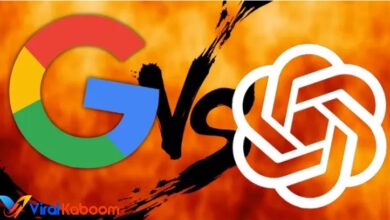The Top 10 Digital Advertising Trends to Watch in 2023

In the ever-evolving landscape of digital advertising, staying ahead of the curve is essential for businesses aiming to maximize their online presence and reach their target audience effectively. As we step into 2023, a new set of trends is poised to reshape the digital advertising landscape. In this article, we’ll delve into the top 10 digital advertising trends that every marketer and business owner should keep a keen eye on.
Digital Advertising Trends
The world of digital advertising is transforming never before. With advancements in technology, shifts in consumer behavior, and changing regulations, staying updated with the latest trends is crucial for businesses aiming to succeed in the digital realm.
The Rise of AI-Powered Advertising
In the rapidly evolving landscape of digital advertising, one trend has taken center stage like never before: AI-powered advertising. Artificial Intelligence (AI) is fundamentally changing the way businesses approach their marketing strategies, offering a level of precision and efficiency that was previously unimaginable.
Understanding AI in Advertising
Digital Advertising Trends: AI in advertising refers to the use of advanced algorithms and machine learning to optimize and automate various aspects of advertising campaigns. It goes beyond traditional methods, allowing marketers to harness the power of data and insights to deliver highly targeted and personalized ads to their audience.
Read More: How To Promote Your Blog Using Digital Advertising
Enhanced Targeting
One of the primary advantages of AI in advertising is its ability to analyze vast amounts of data in real time. This enables advertisers to identify and target their ideal audience with pinpoint accuracy. Instead of broadcasting generic ads to a broad audience, AI helps in creating tailored messages for different segments, ensuring that the right content reaches the right people at the right time.
Predictive Analytics
AI can predict consumer behavior based on historical data and current trends. This predictive analytics capability allows advertisers to anticipate what consumers are looking for, enabling them to proactively meet those needs. This not only enhances the user experience but also drives higher conversion rates.
Dynamic Content Optimization
Digital Advertising Trends: AI can dynamically optimize ad content based on user interactions and preferences. For example, if a user frequently clicks on video ads rather than image ads, AI will prioritize showing them video content. This ensures that the advertising message aligns with the user’s preferences, increasing engagement.
Ad Campaign Automation
AI-powered tools can automate the management of advertising campaigns. This includes adjusting bid amounts, and ad placements, and even creating and testing different ad variations. Automation not only saves time but also ensures that campaigns are continuously optimized for the best results.
Personalization at Scale
AI enables personalization on a large scale. Marketers can create personalized ad experiences for thousands or even millions of users simultaneously. This level of personalization fosters a deeper connection between the brand and the consumer, leading to increased brand loyalty.
The Future of AI in Advertising
As AI technology continues to advance, its role in advertising is expected to expand further. Here are some key trends to watch:
Voice-Activated Ads: With the proliferation of voice-activated devices like smart speakers, AI-driven voice ads will become increasingly relevant. Advertisers will need to optimize their content for voice search to stay competitive.
AI-Generated Content: AI can assist in creating ad copy and content. While human creativity remains irreplaceable, AI can generate data-driven insights to inform content creation, making it more effective.
Video Dominance: The Reign of Short-Form Video Content
Digital Advertising Trends: Short-form video content, epitomized by platforms like TikTok and Instagram Reels, continues to gain popularity. Marketers need to harness the power of engaging video content for maximum impact.
Immersive Advertising with Augmented Reality (AR)
Digital Advertising Trends: AR ads offer immersive experiences, allowing users to interact with products virtually. This trend is set to redefine how consumers engage with brands.
Privacy-First Advertising
With increasing concerns about data privacy, advertisers must adopt transparent and ethical data collection practices to build trust with consumers.
Voice Search Optimization
Voice search has emerged as a game-changer in the world of digital advertising and SEO (Search Engine Optimization). With the increasing prevalence of voice-activated devices and virtual assistants like Siri, Alexa, and Google Assistant, optimizing your content for voice search has become imperative to stay competitive in the digital landscape.
Understanding Voice Search
Digital Advertising Trends: Voice search is the act of using voice commands to initiate an online search rather than typing queries into a search engine. Users speak naturally, often in the form of a question, and expect instant, spoken responses. This shift in search behavior has significant implications for marketers and businesses.
The Rise of Voice-Activated Devices
The widespread adoption of voice-activated devices, such as smart speakers and smartphones, has fueled the growth of voice search. Users find it convenient to ask their devices for information, and recommendations, or to perform tasks, making voice search an integral part of their daily routines.
Natural Language Processing (NLP)
Voice search relies on Natural Language Processing (NLP) technology to understand and interpret spoken language. NLP algorithms are designed to recognize conversational queries and provide relevant results. Marketers must align their content with these conversational patterns.
Key Strategies for Voice Search Optimization
Digital Advertising Trends: To optimize your content for voice search, consider the following strategies:
Conversational Keywords
Voice search queries tend to be longer and more conversational than traditional typed queries. Focus on long-tail keywords and phrases that mimic how people speak naturally. For example, instead of “best coffee shops,” target “What are the best coffee shops near me?”
Featured Snippets
Digital Advertising Trends: Google often pulls information from featured snippets to answer voice search queries. Structure your content to provide concise, informative answers to common questions related to your industry or niche. This increases the chances of your content being featured in voice search results.
Local SEO
Voice searches often have local intent, such as “Find a restaurant near me” or “What’s the nearest hardware store?” Ensure your business has a robust online presence, including accurate NAP (Name, Address, Phone number) information, to appear in local voice search results.
Mobile Optimization
Voice searches are predominantly conducted on mobile devices. Ensure your website is mobile-friendly and loads quickly to provide a seamless experience for users.
Schema Markup
Implement schema markup on your website to provide search engines with structured data about your content. This helps search engines understand your content better and present it more effectively in voice search results.
The Future of Voice Search
Digital Advertising Trends: As voice search technology continues to evolve, it’s essential to stay informed about the latest developments and adapt your SEO and advertising strategies accordingly. With the integration of voice search in cars, appliances, and wearable devices, its impact will only continue to grow.
In conclusion, voice search optimization is no longer a luxury but a necessity in the digital advertising landscape. Embrace this trend, understand user behavior, and tailor your content and SEO efforts to provide valuable and accurate responses to voice search queries. By doing so, you’ll position your business for success in an increasingly voice-driven world.
Hyper-Personalization and Behavioral Targeting
Digital Advertising Trends: Consumers now expect personalized experiences. Advertisers must leverage data to deliver content tailored to individual preferences and behaviors.
Sustainability and Ethical Advertising
In an era of heightened awareness about environmental and social issues, brands that align with sustainability and ethical values resonate more with consumers.
Social Commerce Integration
Social media platforms are increasingly becoming shopping destinations. Brands need to integrate seamless shopping experiences within social apps.
Influencer Marketing Evolution
Influencer marketing is evolving beyond sponsored posts. Authentic collaborations and long-term partnerships with influencers are becoming the norm.
Read More: How Blockchain is Revolutionizing Digital Marketing
Conclusion
As we journey into 2023, the digital advertising landscape is poised for exciting transformations. The top 10 digital advertising trends discussed in this article are not merely suggestions but rather essential roadmaps for businesses and marketers looking to thrive in an ever-evolving online world.
From the rise of AI-powered advertising, which offers unparalleled precision and efficiency, to the dominance of short-form video content and immersive augmented reality experiences, these trends paint a vibrant picture of what’s to come. Embracing these trends can be the difference between merely existing in the digital space and excelling in it.
Privacy-first advertising, voice search optimization, hyper-personalization, sustainability, social commerce, and influencer marketing evolution are all facets of the digital advertising mosaic that demand attention. They represent the intersection of consumer preferences, technological advancements, and ethical considerations.
FAQs
Q1: How can I harness AI in my digital advertising campaigns?
A1: Start by exploring AI-powered advertising platforms that offer robust targeting and optimization features.
Q2: What is the significance of short-form video content in advertising?
A2: Short-form videos capture user attention quickly and are highly shareable, making them a valuable asset in digital marketing.
Q3: How can I implement augmented reality in my advertising strategy?
A3: Consider creating AR experiences within mobile apps or partnering with platforms that offer AR ad placement.
Q4: What steps should I take to ensure privacy-first advertising?
A4: Obtain user consent for data collection, be transparent about data usage, and comply with relevant privacy regulations.
Q5: How do I find the right influencers for my brand’s marketing?
A5: Look for influencers whose values align with your brand, and focus on building authentic, long-term partnerships.












2 Comments